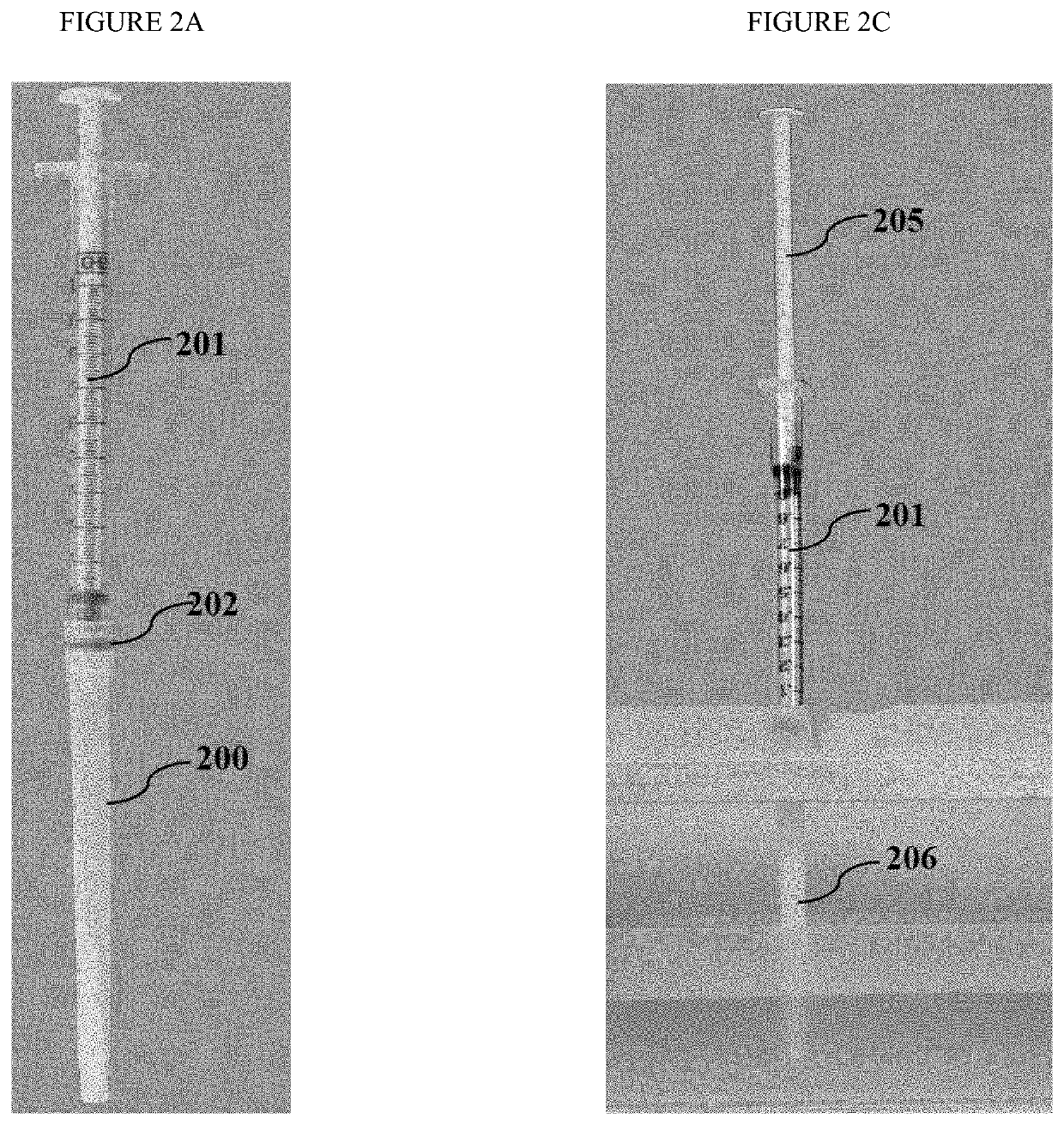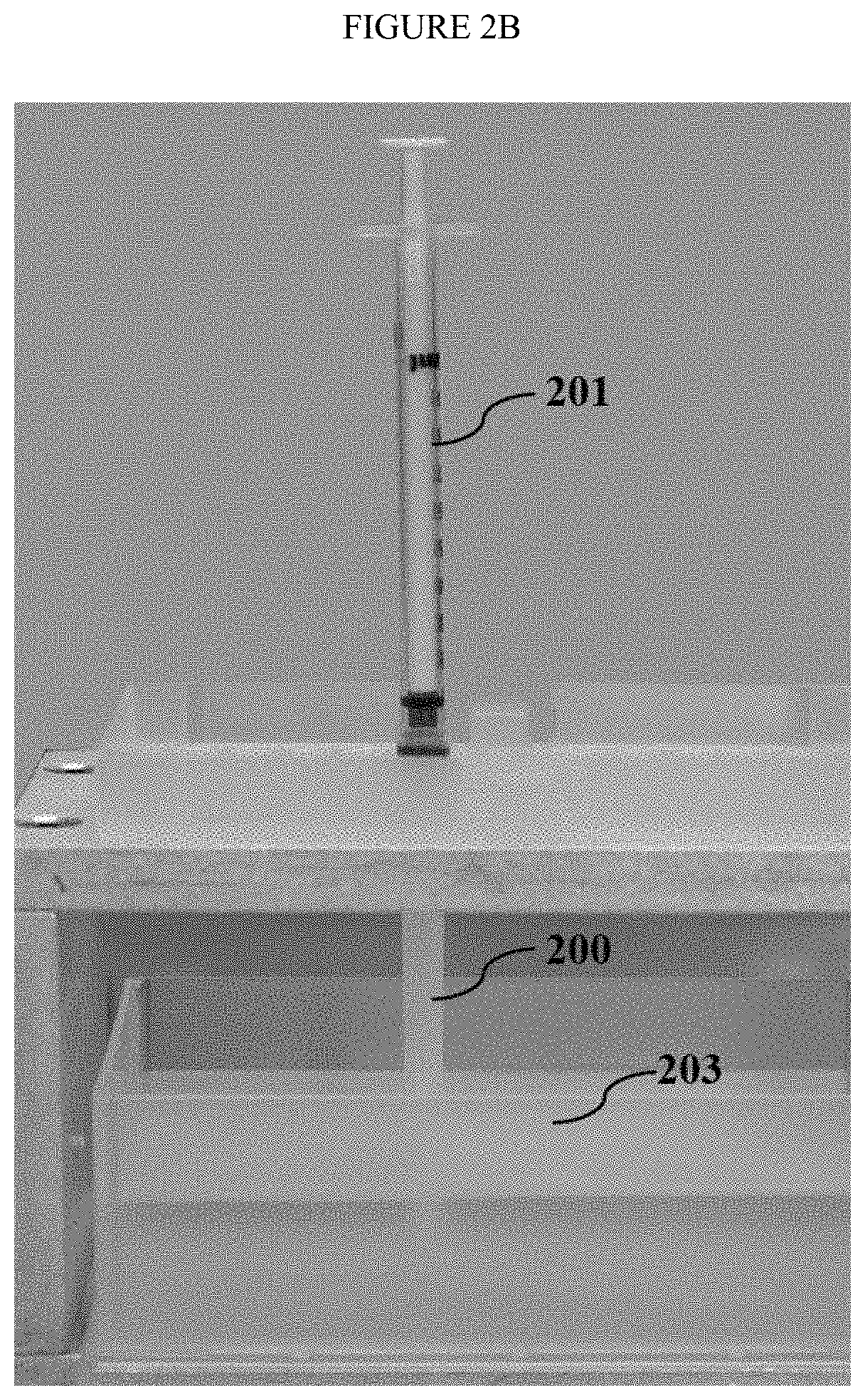Automated group separations of complex mixtures with gel filtration pipette tips
a technology of complex mixtures and gel filtration, which is applied in the field of chemical and biological sample preparation, can solve the problems of destroying the gel separation ability, and achieve the effects of preventing cross contamination of samples, sacrificing the abilities of the robotic liquid handler, and facilitating the separation of complex mixtures
- Summary
- Abstract
- Description
- Claims
- Application Information
AI Technical Summary
Benefits of technology
Problems solved by technology
Method used
Image
Examples
example 1
[0123]The separation capabilities of the presently described device was evaluated using size exclusion media with a low molecular weight cutoff of 1500 Da, using a hand-held pipettor as the pipetting aid. The sample solution contained a mixture of FD&C red 40 and red 3 dyes (small molecules with molecular weights of 496 and 880 g / mol, respectively), and a blue stained protein standard (molecular weights 10-250 kDa).
[0124]The process for preparing the gel filtration pipette tip and performing the separation is illustrated in FIG. 3 and real images of the gel filtration pipette tip at different points in this process are shown in FIG. 4; however, the sample wells and pipetting aids are not shown for simplicity.
[0125]The gel filtration pipette tip 310 utilized Sephadex G15 resin 311 having a molecular weight cutoff of 1500 Da. About 180 mg of the Sephadex G15 resin was placed in a gel filtration pipette tip having a porous frit (50 μm and made of polyethylene and polystyrene blend) 312...
example 2
[0130]This example describes the methods for using a robotic liquid handler and adaptors with the gel filtration pipette tip. As before, the sample solution contained a mixture of FD&C red 40 and red 3 dyes (small molecules with molecular weights of 496 and 880 g / mol, respectively), and a blue stained protein standard (molecular weights 10-250 kDa).
[0131]The gel filtration pipette tip for this example utilized Sephadex G25 resin, which has a molecular weight cutoff of 5000 Da. About 150 mg of the Sephadex G25 resin was placed in a 1 mL pipette tip having a porous frit at the distal, narrow end of the pipette tip. The gel filtration pipette tip was positioned on a rack over a solvent reservoir containing PBS solution on the deck of a Hamilton Nimbus96 robotic liquid handler.
[0132]The robotic liquid handler's pipetting head engaged the gel filtration pipette tip by first attaching to an adaptor fitted with an o-ring. Then the adaptor was placed on top of the hub of the gel filtration ...
example 3
[0137]In addition to gel filtration, the presently described devices can also be used for group separations, such as desalting. In this example, gel filtration pipette tips were prepared and evaluated for their use in rapid desalting for protein analysis.
[0138]In this example, 300 μL wide bore pipette tips were fitted with a 50 μm porosity frit at the distal end. Resin was then added to each tip to form the gel filtration pipette tips. The tips contained either 45 mg of Sephadex G15 resin, or 31 mg Sephadex G25fine resin.
[0139]As before, the gel filtration pipette tips were placed in a buffer reservoir, and a hand-held pipettor was used to slowly aspirate 300 μL of PBS buffer into the gel filtration pipette tips, which was held therein to swell the resin and allow to settle. This amount of buffer was able to be used because the maximal volume of these tips is actually 350 μL, not the listed volume of 300 μL.
[0140]After a predetermined amount of time, here 10 minutes, the pipettor wa...
PUM
 Login to View More
Login to View More Abstract
Description
Claims
Application Information
 Login to View More
Login to View More - R&D
- Intellectual Property
- Life Sciences
- Materials
- Tech Scout
- Unparalleled Data Quality
- Higher Quality Content
- 60% Fewer Hallucinations
Browse by: Latest US Patents, China's latest patents, Technical Efficacy Thesaurus, Application Domain, Technology Topic, Popular Technical Reports.
© 2025 PatSnap. All rights reserved.Legal|Privacy policy|Modern Slavery Act Transparency Statement|Sitemap|About US| Contact US: help@patsnap.com



